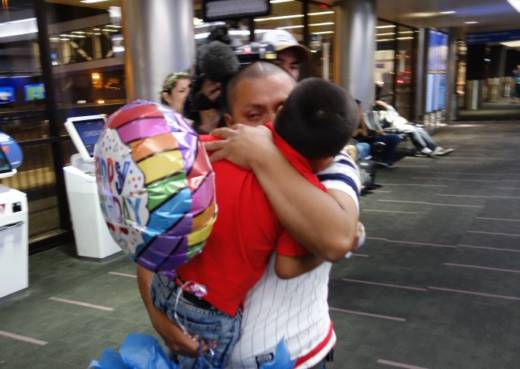Last month, Sabraw ordered the government to reunify all children with their parents by July 26.
Sabraw told government attorneys that he found it “exasperating” that the Office of Refugee Resettlement, which takes custody of migrant children who enter the U.S. without a parent, applied inappropriate standards for the release of children the government took from their parents.
“This is not hard stuff,” Sabraw said. “There's not going to be any issue or any concern about parentage fitness or danger, and reunification can occur quickly.”
In order to release a child to a parent, relative or sponsor, the Office of Refugee Resettlement must verify parentage and conduct background checks to ensure the person poses no threat to the child. The protocol in some cases includes DNA testing and acquiring copies of birth certificates from consulates, and it can take months.
Earlier this month, DNA tests delayed reunifications of some children under the age of 5. The government identified 103 children but had failed to return 20 of them to parents by a July 10 deadline. The government later reported 57 of the youngest children were returned to parents.
New Plan
The government's new plan streamlines the vetting process, while still protecting children from traffickers and abuse, according to Cmdr. Jonathan White with the U.S. Public Health Service Commissioned Corps.
White, who designed the expedited reunification plan, testified Monday that the Office of Refugee Resettlement had identified nearly all of the parents of the 2,551 children.
He told Sabraw that roughly a third of the parents were in the custody of U.S. Immigration and Customs Enforcement and could be reunited with their children within 48 hours — once they had been cleared.
By Monday, ICE had given final approval to 918 cases and expected to review another 348 cases by the end of the week.
White said 51 cases had “not been cleared” by ICE.
The government is scheduled to update the court on reunifications by 3 p.m. Thursday.
Reunifications Will Take Place at Eight ICE Facilities
For families approved for reunification, the government plans to send parents to one of eight ICE detention facilities in the U.S. and then deliver the child to the parent in custody.
White did not reveal the locations but said most of the children whose parents were in immigration custody could be transferred to those ICE facilities in six to 48 hours. Roughly 50 children faced longer journeys, he said.
Sabraw called the plan sound.
“It does all of the things that I thought the court had made clear from day one, where there's a streamlined process where reunification can happen quickly and safely,” Sabraw said. “The two are not divorced from one another.”
Help Available for Families
Spencer Amdur with the American Civil Liberties Union, which filed the lawsuit representing separated families, said he was still waiting for the government to confirm the names of people reunited this week.
“I think they’re doing it — hopefully quickly,” Amdur said. “They’re doing it in batches. Another group each day is getting reunified, and then hopefully released.”
For now the government is not allowed to immediately deport reunified families. The ACLU says it asked for the stay on removals to give families time to learn their legal rights and fully consider their options.
Amdur said hundreds of volunteer immigration attorneys have mobilized to help represent the families.
